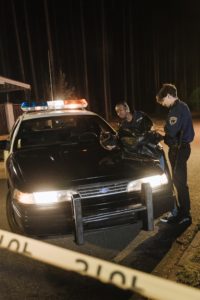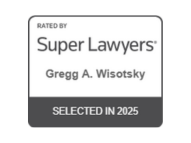Do Police Lineups Lead to Accurate Convictions?
In roughly 5% of all criminal trials, eyewitness evidence is a crucial part of the prosecution’s case. However, this form of evidence isn’t always accurate. Especially in cases where the accused was identified in a police lineup, the eyewitness can be mistaken.

DNA Evidence Reveals Lineup Identifications are Often Wrong
Police lineups are a standard part of criminal investigations. Police bring in several people who look like the suspect and see if the victim can point out the suspect from the lineup. This might seem like a clear and obvious way of identifying a criminal. However, it isn’t always foolproof.
As DNA evidence becomes more and more common, the flaws of police lineups are becoming clear. Many recent cases have shown that people were wrongfully convicted as a result of lineup evidence. For example, consider the false conviction of Lydell Grant. Grant was sentenced to life in prison after eyewitnesses to a murder selected him from a lineup. However, years later, DNA testing pointed to another suspect, Jermarico Carter, who then confessed to the killing.
Why are lineups so unreliable? They can result in false outcomes because they rely on vague and imprecise memories. When a person only got a brief glance during a highly emotional moment, they might not remember exact facial features. This can make it very easy for them to pick an innocent person out of the lineup.
Research Shows That Law Enforcement Interactions Can Influence Lineup Picks
Studies show that there are a few key flaws in how police lineups are conducted. Misconduct can make false positives far more common. One of the biggest risk factors for false identification is poor instructions. When witnesses are told they “must” pick a suspect instead of they “can” pick a suspect, they’re more likely to make a false identification.
The person conducting the police lineup can also consciously or unconsciously direct the witness toward a specific choice. Psychological experiments have found that the lineup administrator is likely to smile or provide other physical cues when a witness looks at the suspect in the lineup. They are also likely to draw attention to the suspect by asking questions about them specifically. These sorts of cues can encourage the witness to select the police’s suspect, even if the person is innocent.
How Lineup Outcomes Can Affect Your Case
All of these facts about police lineups and false accusations can definitely be concerning if you are suspected of a crime. However, the fact that there is more evidence about the inaccuracy of eyewitness identification can actually help your case. Since people are now aware of how poorly conducted lineups can lead to misidentification, your Morristown criminal defense lawyer has more chances to defend you.
If the police want you to join a lineup, you have a right to have your legal counsel with you in order to collect evidence on how the lineup is conducted to make sure it is as accurate as possible. Your lawyer can ask for things like a double-blind lineup, where the administrator does not know you are the suspect, and they can prevent police from saying things to influence the witness. All of these things can reduce the risk of a witness accidentally pointing you out in the lineup.
Even in cases where the witness does identify you in the lineup, your lawyer still has options for defending you in court. They can use the latest research to emphasize how unreliable lineups are. If your lineup was improperly conducted, they may even be able to petition the court to withhold lineup outcomes from the jury.
Ultimately, you should not let lineup results intimidate you into a guilty plea. Lineups can be an unreliable tool, so you still have a chance to prove your innocence in court. At the law firm of Gregg Wisotsky, our Morristown criminal defense lawyer, has plenty of experience handling these sorts of complex cases. To learn more about our services, call us at 973-898-0161 or fill out our contact form today.













Leave a Reply